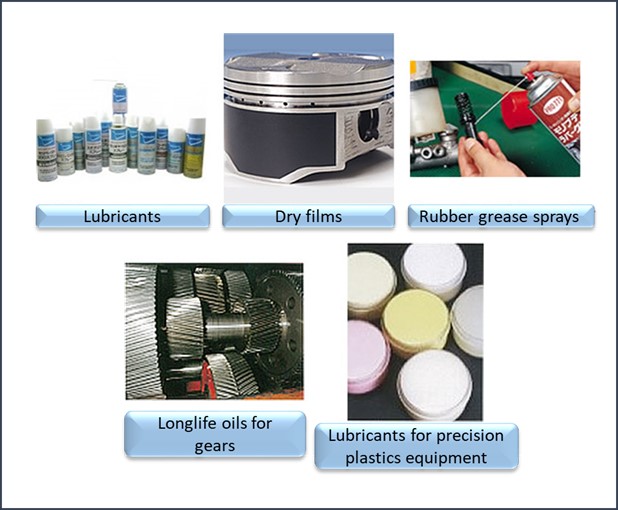Sumico Lubricant CO, LTD. Chemical industryFactory-ONE MF

Sumitomo Metal Mining Co., Ltd., a group company, started off as a specialized manufacturer of molybdenum disulfide-based lubricants in 1957 with the aim to effectively utilize high-purity molybdenum disulfide yielded from the Hirase Mine in Gifu Prefecture as a lubricant. Since then, they have been working on the development of new products that meet diverse needs as a comprehensive needs of manufacturers of lubricants by improving their technological capabilities through introducing technologies developed overseas, expanding their sales locations, and strengthening factories. We interviewed them about their decision to transition from the in-house developed sales management system to the new core system.
Background of the implementation of the new system
Sumico developed their own sales management system in 1998, but more than 10 years have passed since it started operation and,
1) It was necessary to improve the management level, and a production management system became necessary, due to the increase in the types of products. In addition, the shipping work became complicated.
2) Hardware and software have become obsolete due to deterioration over time.
3) Since numerous add-ons was developed by additional customization even after the start of the operation, the management system reached the limit of maintaining consistency as an integrated system.
Therefore, in 2010, they started considering the implementation of a new system that could centrally manage sales, shipping, and production.
System selection criteria
With 530 types of products being manufactured, the shipping system was the lifeline of the company. Therefore, on the condition that the shipping system is good enough along with production and sales management system, the company selected 6 system vendors as candidates, held a competition, and finally they decided to select "Factory-ONE.”
The deciding factors for the selection were our know-how and experience acquired through the many implementation cases which we were talking about during the presentation and product demonstration, and above all, the program source that was open to the public.
Challenges when implementing the new system
The old core system consisted of three components: sales, shipping, and production management systems. First of all, regarding sales management, it was difficult to get the field operators to understand the new operation rules since they have changed from the conventional system to the new one. After all, although there was some confusion at the beginning of operation, we were able to overcome this challenge by unifying the intentions for the system through four group trainings of field operators.
Next, regarding production management, they were managing each site using Excel, etc. based on the production plan, so this was the first time they implemented an integrated production management system and started from scratch. Therefore, the most challenging point was that the system terminology was not well communicated to the field operators. To address this challenge, we first focused on getting field operators to thoroughly understand the standard system flow, and provided operational guidance.
However, in the field work, apart from the standard specifications, there are many more processes than one could imagine, and it was quite challenging to establish a process method for each case. Also, although it is the same as sales management, it took a considerable amount of time because it was difficult for people to understand the operation rules.
Benefits of implementation
Previous systems relied on manual inventory checks. Therefore, the data was not managed centrally, and it would very time-consuming to check the inventory because it was necessary to contact each department in charge. However, after the implementation, the company was not only able to manage inventory centrally, but it also became very easy to respond to inventory inquiries, since now the company was able to accurately grasp inventory information. In addition, this greatly reduced the time required for the mentioned tasks.
Moreover, it was a great advantage for the company to be able to allocate inventory on a lot-by-lot basis (inventories are secured in the order in which they were entered). This is because of the fact that although there is no functional deterioration of the lubricant itself, the expiration date is set as a criterion because the components may separate due to long-term inventory. As a result, 100% first-in first-out shipping was possible at the picking stage, which prevented losses due to long-term accumulation.
The reason why such a remarkable effect was achieved in inventory management is that tablet devices, handy scanners, and mobile printers were used to manage all movements of goods from materials to intermediate products and finished products with QR codes.
When it comes to shipping management, the old system was complicated because the matching work using forms and tags was performed visually. However, now by reading the QR code, pre-shipment inspection can be conducted easily and quickly, and the complicated work has been greatly improved.
In the past, each manufacturing site manufactured each product based on the production plan, so it was not possible to share information such as which materials were used and how much, and how many common materials were used. Because of that, some materials were overstocked. Now, it is possible to control surplus inventory by accurately inputting the amount of materials input from the tablet device at the site and sharing information.
Main products
